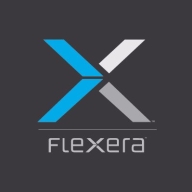


Flexera Cloud Management Platform and Morpheus are cloud management solutions. Users are more satisfied with the pricing and support of Flexera CMP, while Morpheus is preferred for its comprehensive feature set.
Features: Flexera CMP provides excellent visibility and tracking of cloud expenditure, offers integrations, and provides rich analytics. Morpheus is recognized for its comprehensive orchestration tools, multi-cloud governance, and self-service provisioning.
Room for Improvement: Flexera CMP could improve its deployment complexity, simplify its user interface, and expand its feature set for easier use. Morpheus could enhance its customer support responsiveness, improve certain integrations, and streamline some of its advanced features for users with less technical expertise.
Ease of Deployment and Customer Service: Flexera CMP involves a more complex deployment process but offers dependable customer support. Morpheus provides a simpler, user-friendly deployment approach with responsive customer service, making it suitable for quick implementation.
Pricing and ROI: Flexera CMP includes higher initial setup costs but delivers satisfactory ROI through its efficient cost management features. Morpheus offers competitive pricing with lower setup costs, providing significant ROI for businesses utilizing its full feature set.


IBM Turbonomic offers automation, planning, and right-sizing recommendations to streamline resource management, improve efficiencies, and optimize costs across virtualized environments and cloud platforms.
IBM Turbonomic is valued for its capability to optimize resource allocation and monitor virtual environments efficiently. It facilitates automated decision-making in VM sizing, load balancing, and cost optimization for both on-premises and cloud deployments. Users can leverage insights for workload placement, ensure peak performance assurance, and effectively right-size across VMware and Azure. The ongoing transition to HTML5 aims to improve visual and navigational ease, while expanded reporting features are anticipated. Opportunities for improved training, documentation, and integrations enhance platform usability and functionality.
What Are the Key Features?In finance, IBM Turbonomic aids in maintaining platform efficiency during market fluctuations. Healthcare organizations leverage its capability for resource optimization during high-demand periods to enhance patient care support. Retailers use it for planning in peak seasons, ensuring resources align with fluctuating demand to maintain performance continuity.
Flexera Cloud Management Platform (CMP) optimizes cloud costs and resources while efficiently managing multi-cloud environments. Its features for monitoring and governance aid in compliance. Valued for integration capabilities and automation tools, Flexera CMP streamlines cloud operations.
Flexera Cloud Management Platform (CMP) excels in multi-cloud management, cost optimization, and automation. Users appreciate its detailed analytics and reporting features that effectively track usage and costs. The platform's flexibility in integrating with different cloud environments allows seamless operations across various services, while its governance and policy enforcement are significant strengths. However, some users note the need for better integration with additional cloud providers, a high installation complexity, and that the support documentation lacks depth. Reporting features could be more comprehensive, and scalability issues exist in larger environments. Frequent updates can sometimes disrupt ongoing activities.
What are the Key Features of Flexera CMP?Flexera Cloud Management Platform is utilized across numerous industries, including finance, healthcare, and technology, to manage multi-cloud setups. Financial institutions leverage its cost optimization features to streamline expenses. Healthcare providers use its governance tools to ensure strict compliance with regulations. Technology companies benefit from its automation capabilities, allowing them to focus on innovation while Flexera CMP handles cloud infrastructure tasks.
Morpheus is a 100% agnostic cloud management platform (CMP) designed from the ground up to unify management of multi-cloud and hybrid IT while empowering DevOps teams with self-service provisioning of bare metal, VM, and container-based application services.
We monitor all Cloud Management reviews to prevent fraudulent reviews and keep review quality high. We do not post reviews by company employees or direct competitors. We validate each review for authenticity via cross-reference with LinkedIn, and personal follow-up with the reviewer when necessary.